How to repot succulents – plus expert tips on the best time to do it
Follow our easy step-by-step guide to repotting succulents and get them back on track fast
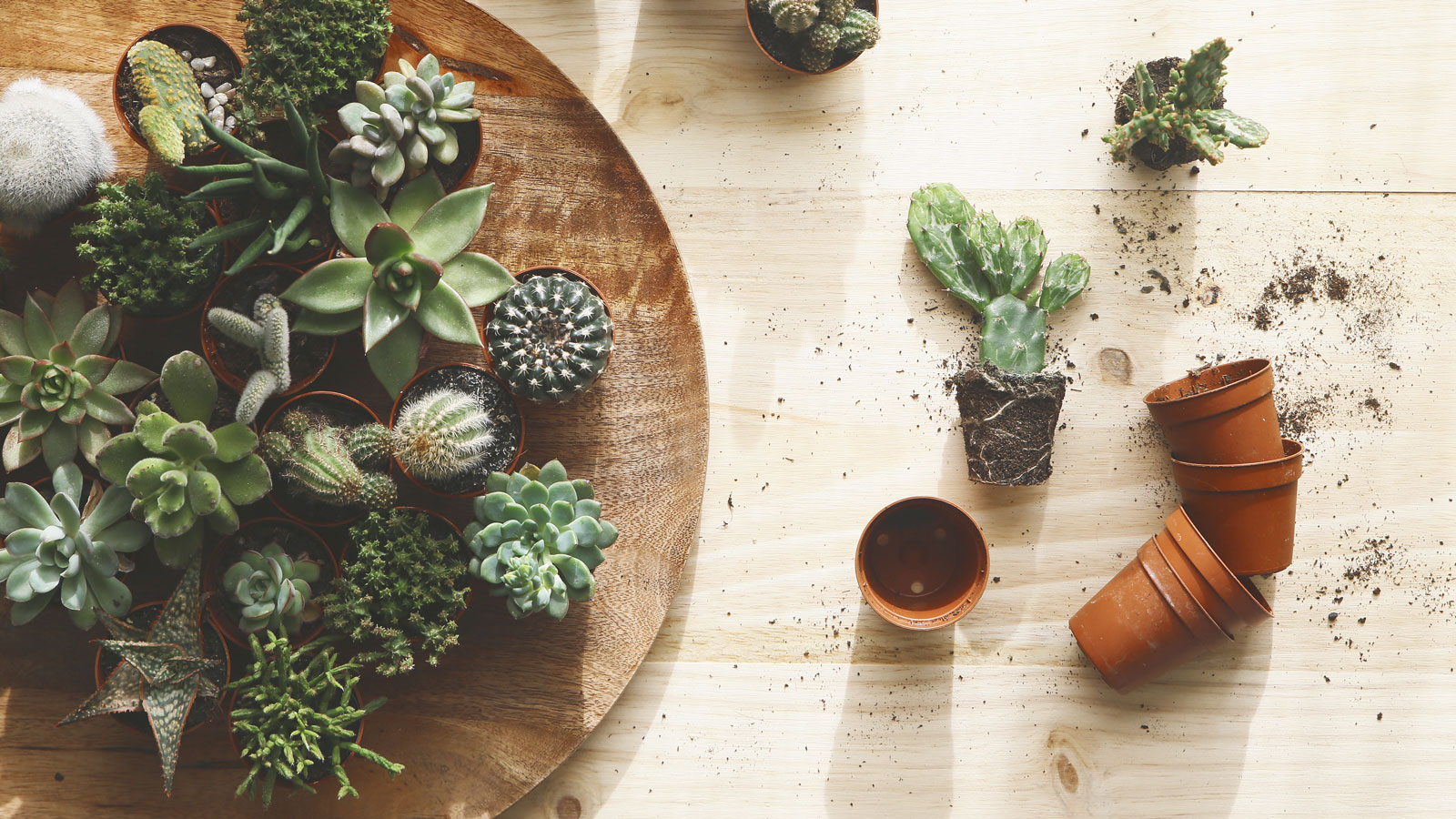

If you have a collection of these sweet little plants on the back of the current trend for them, you'll want to find out how and when to repot succulents to keep them looking their best. Or maybe that ship has sailed and your plants are already in need of help as they're not looking very fresh or perky any more.
There are lots of indications it could be time to repot your succulents, particularly if they're thriving and have grown too big for their pot, or alternatively if they don't appear to be growing at all or are positively ailing.
The good news is that repotting succulents doesn’t take long to do with our step-by-step expert guide. Identifying any potential problems linked with repotting is a key part of how to care for succulents so it's important to get it right if you want your plants to look their best. The results will be so worth it.
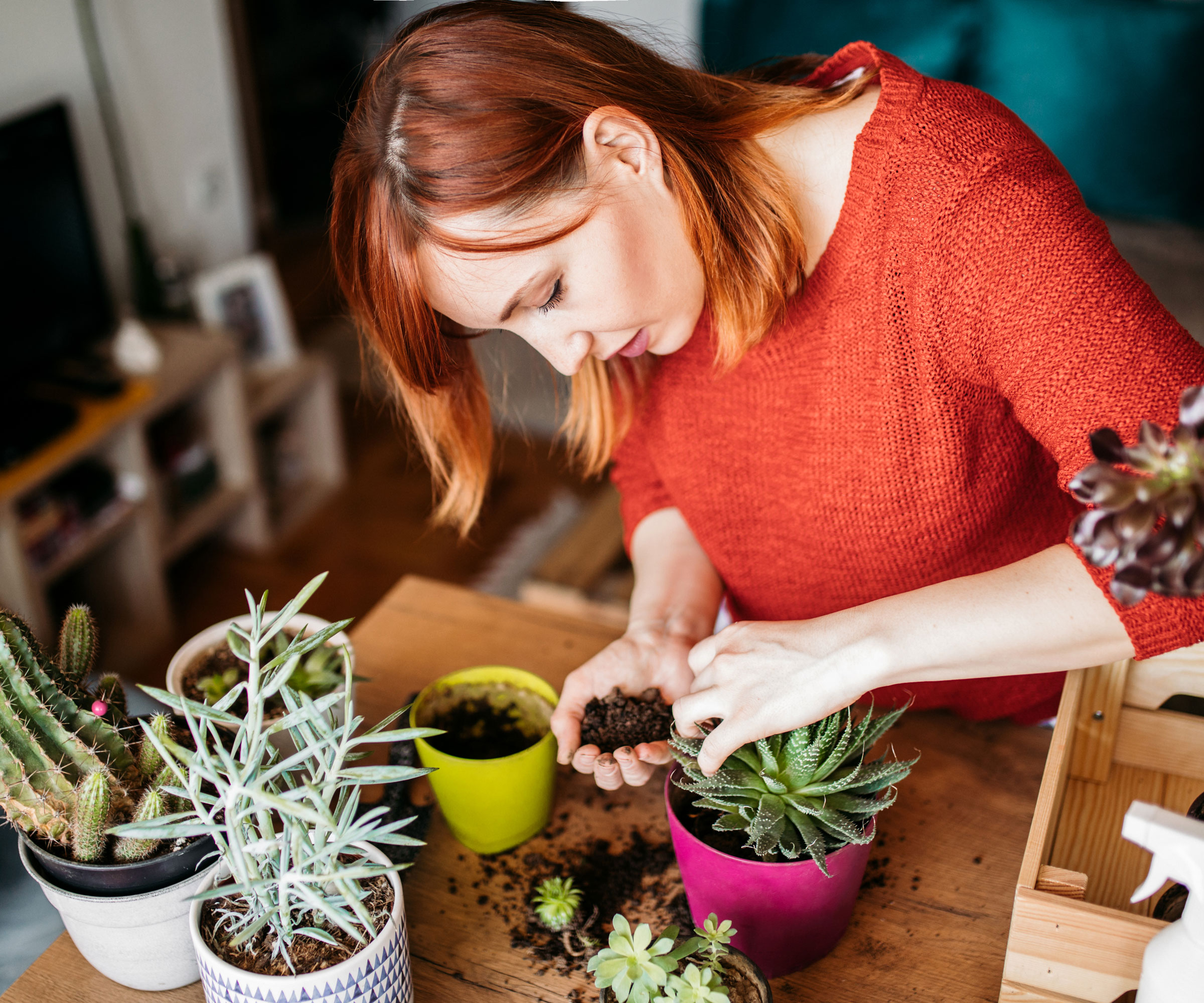
The good news is repotting succulents is easy, especially as they tend to be smaller than many other indoor plants
How to repot succulents in 6 simple steps
'All types of succulent should be replanted when they outgrow their current pot or when the soil has become too compacted or depleted of nutrients,' says horticulturalist Tammy Sons of TN Nursery.
It’s a good idea to water them a few days before you start repotting so the soil is moist, and not dry and caky, which could damage delicate plant roots. Then all you need to carry out the task are some larger pots (aim for 20% bigger in width and height than the existing one) and some fresh potting soil like this Premier Horticulture Organic Cactus Mix from Amazon.
Then follow these easy steps from Tammy to make sure your succulents are repotted in the best way.
- Choose a pot slightly larger than the current one, with drainage holes to prevent water from causing root rot. Ensure the pot is made of a porous material, such as terracotta, to allow for proper airflow.
- Use a well-draining soil mix specifically formulated for succulents. Avoid regular potting soil, which can retain too much moisture and suffocate the roots. To improve drainage, you can also add perlite or sand to the soil mix.
- Remove the plant from its container, gently loosening the soil around the roots. If the plant is stuck, you can use a small knife to loosen the soil.
- If the roots are tightly bound or damaged, prune them to promote new growth. Trim any leggy or damaged stems to encourage bushier growth.
- Place the succulent in the new pot and backfill with fresh soil. Pack it firmly around the roots. Leave space at the top of the pot to allow for watering.
- Water the plant thoroughly, allowing the soil to absorb the water before draining any excess. Avoid watering again until the soil is dry to prevent overwatering.

Tammy Sons is the CEO of TN Nursery in middle Tennessee, and an expert plant advisor who studied horticulture at Texas Tech University. She is passionate about gardening and the environment, and writes about a wide range of topics.
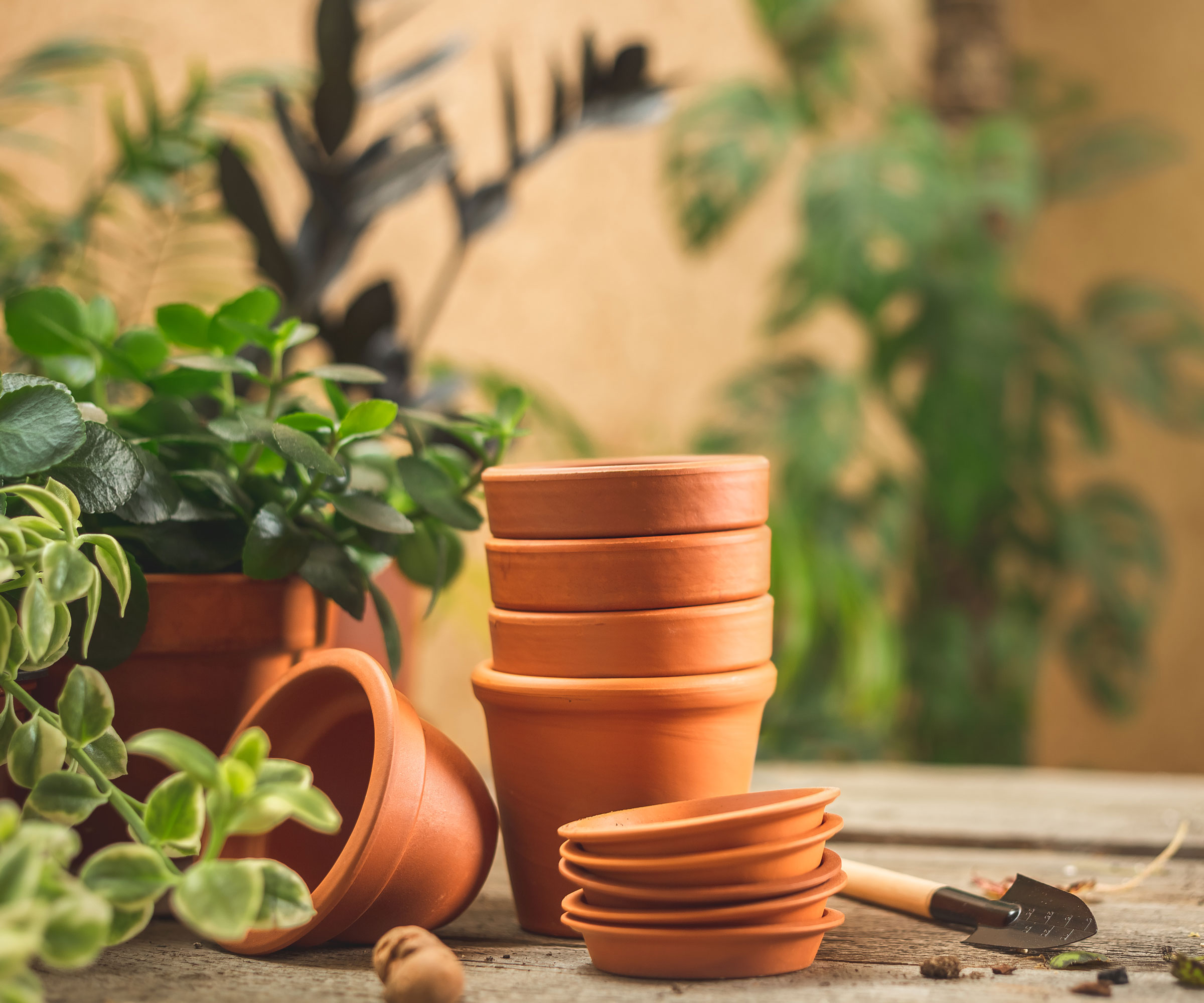
Terracotta is a great choice of pot for succulents as they are porous so allow good air circulation plus they have drainage holes
Signs your succulent needs repotting
'The sign that really matters is if roots are growing out of drainage holes,' says indoor ecology and horticulture specialist Jennifer Schutter of Plantcarefully.com. 'Succulents tend to have very well-aerated soils so you don't have to worry about soil compaction or issues like that.'
If you've noticed a slowdown in growth this is another good indicator that your succulent is low on space, as well as if the water is draining much more quickly than previously when you water your succulents, meaning fresh soil is required.
If your succulent looks unhealthy you should definitely consider repotting it as your plant could be showing signs of a nutrient deficiency. 'If you notice discoloration, drooping, and dropping of leaves these can indicate nutritional deficiencies,' explains Nina Grebin, buyer for Indoor Plants & Containers at Molbak's Garden + Home. 'But they can also be indicators of light or watering issues, so it’s important to rule out any environmental changes when identifying a nutrient deficiency.'
These deficiencies occur when a plant’s soil has been depleted of nutrients, which happens over time as a plant turns those nutrients into the energy needed for growth. 'If you’re noticing that your soil is drying out more quickly or you’re needing to water more frequently, it’s likely due to a change in the soil structure resulting from its organic material being broken down into nutrients,' adds Nina.
You'll soon get your succulent plant back on track after a soil refresh.
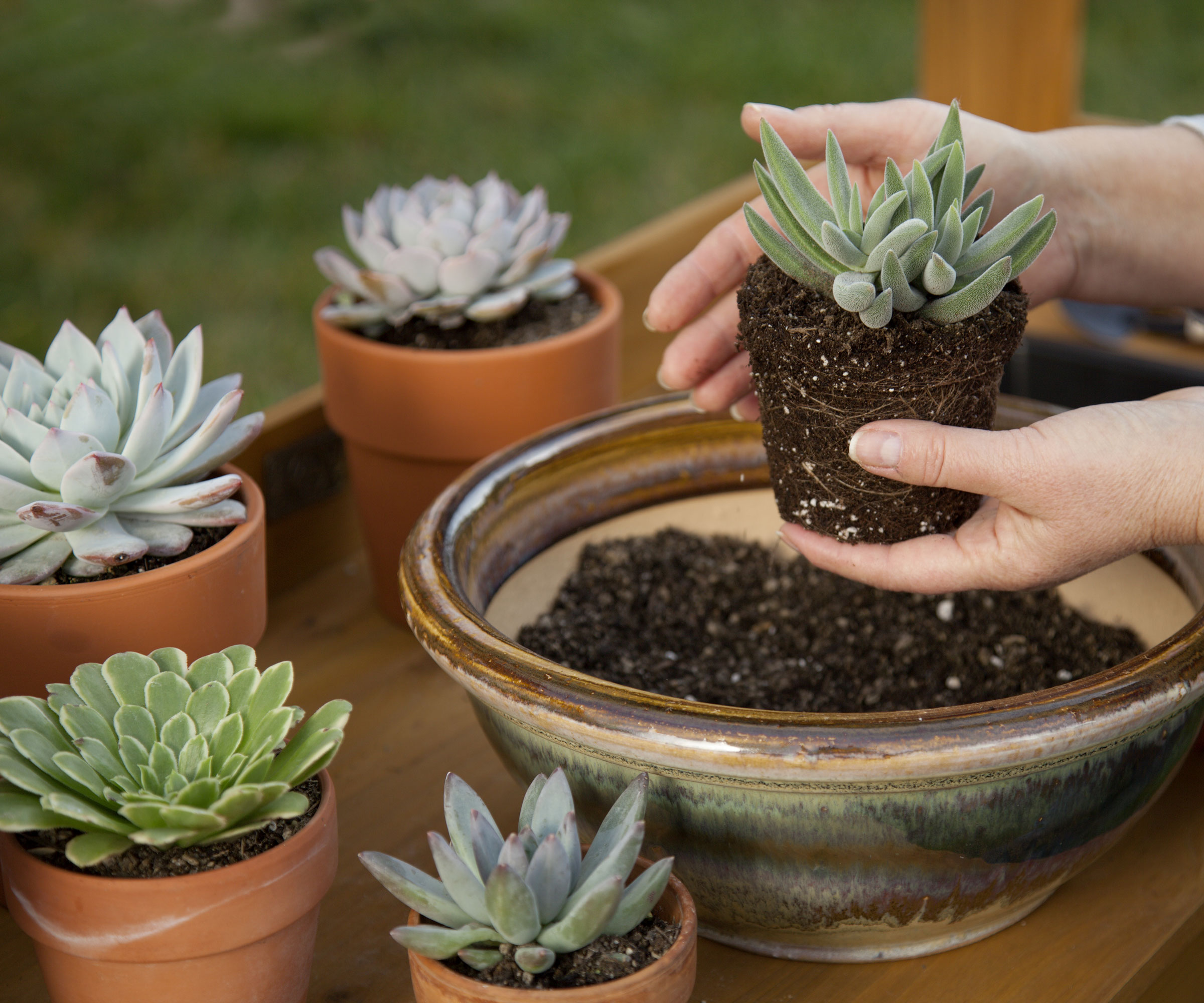
Your succulents will be most comfortable in pots that are only slightly larger when you repot them
When to repot succulents
The best time to repot succulents is in spring when they're actively growing. 'Succulents are much more sensitive during their dormancy period (typically winter), so it's best to repot in early spring when they are best able to recover from the stress of repotting and have plenty of time to acclimatize to their new space before dormancy,' says Nina Grebin. You can still remove dead or damaged leaves as part of how to care for succulents in winter.
Healthy roots should be light-brown and elastic. 'If there are any rotten, soft, or dry ones, carefully cut them off with a sanitized tool and treat the cuts with activated charcoal powder or hydrogen peroxide,' says Tatyana Zhuk, plant expert at NatureID.
If you have a hanging succulent such as string of pearls, turtles, hearts, or mother of thousands then you can also repot when you have too many pups or offshoots, and the pot is overloaded. It's a good time to find out how to propagate succulents to get those babies planted up separately.
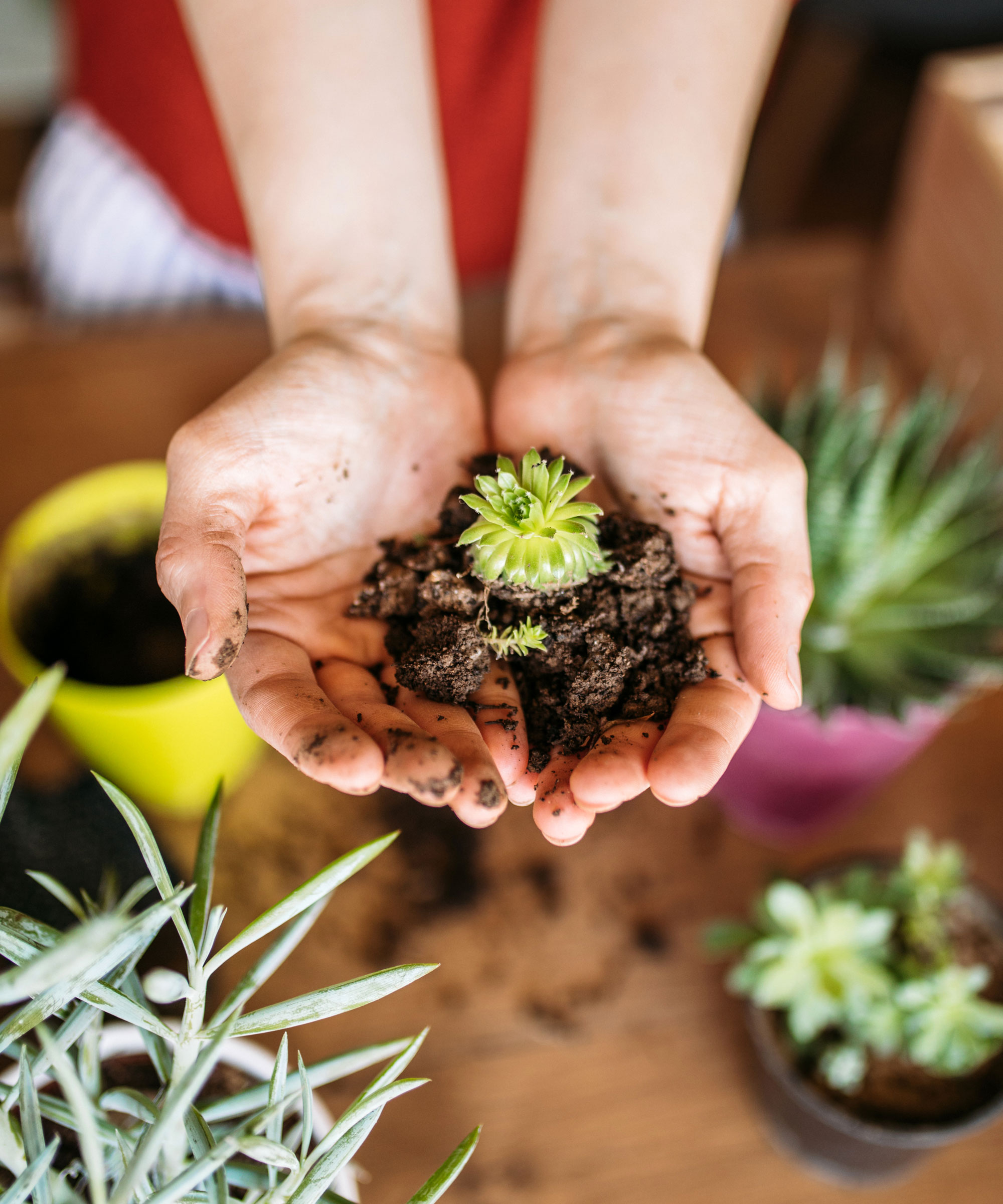
When you're repotting succulents look out for 'pups' you can pot up separately to get more plants for your collection
FAQs
How often should you repot a succulent?
Succulents typically need to be repotted every three years or so. If you think your succulent has outgrown its pot or it's been a few years since you last repotted – or you have never repotted it – then now is the time to do it.
Do you need to use a bigger pot when repotting succulents?
'Chances are that if the plant has started to dwarf the pot it’s in, it’s at least ready for a soil refresh to ensure it continues to get the nutrients it needs,' says Nina Grebin, buyer for Indoor Plants & Containers at Molbak's Garden + Home. 'While changing out your soil, use the opportunity to inspect the roots of your succulent to make sure they’re healthy and take note of the root-to-soil ratio.'
If the roots seem like they still have space to grow freely, repot the plant in the same planter with fresh soil. If there are more roots than soil and the roots have started to grow around the inside of the planter, pot up a size.
'It's really important to only go an inch or two up (one or two sizes) with your pot,' explains Jennifer Schutter of Plantcarefully.com. 'Succulents have very shallow root systems, and are designed by nature to hold a lot of water in their leaves. They can't really clear water out of soil quickly, so you don't want to overwhelm them with a large volume of soil that stays wet for too long.'
Succulents are one of the best indoor plants to add to your collection and they're super easy to look after too.
Just remember you can't expect your plant to look its best if you make the common indoor plant mistake of keeping it in the same pot of soil for years. And if you notice that the roots are sticking out of the bottom of the pot when you water it, it's time to give it more room to grow too.
Sign up to the Homes & Gardens newsletter
Design expertise in your inbox – from inspiring decorating ideas and beautiful celebrity homes to practical gardening advice and shopping round-ups.
Lifestyle journalist Sarah Wilson writes about flowers, plants, garden design and gardening trends for Homes & Gardens. She has studied introductory garden and landscape design and floristry, and also has an RHS Level 2 qualification in the Principles of Plant Growth and Development. She is a regular contributor to Homes & Gardens and Livingetc. She has also written for Real Homes, Modern Gardens and Country Homes & Interiors magazines.
-
 5 things people with clean upholstery always do – simple, quick and oh-so-effective
5 things people with clean upholstery always do – simple, quick and oh-so-effectiveEnsure your furnishing looks clean year-round with these expert tips
By Seraphina Di Mizzurati Published
-
 7 native perennials to plant in April – for glorious flowering displays to attract bees, butterflies, and hummingbirds
7 native perennials to plant in April – for glorious flowering displays to attract bees, butterflies, and hummingbirdsDiscover some of the best perennials to plant in April to make your garden a hotspot for wildlife
By Drew Swainston Published